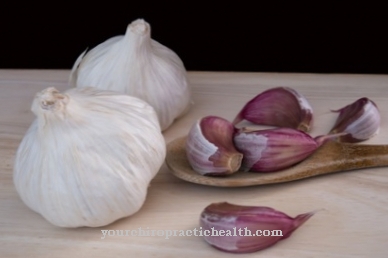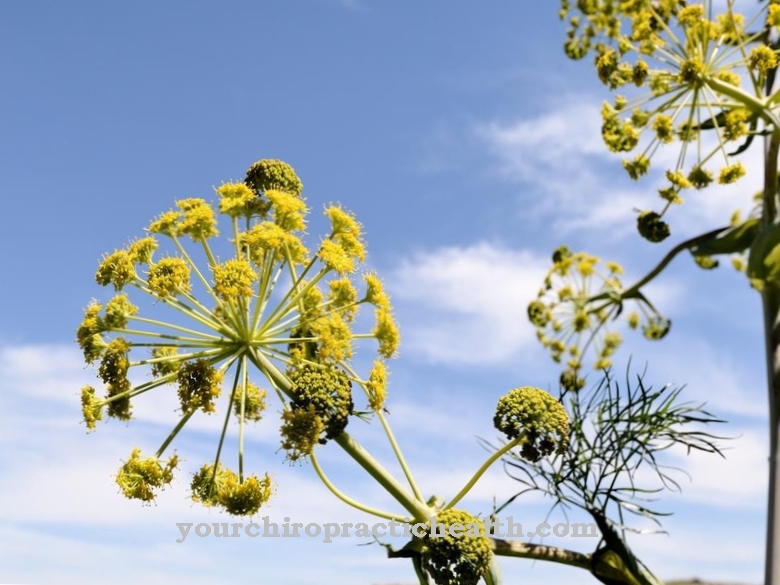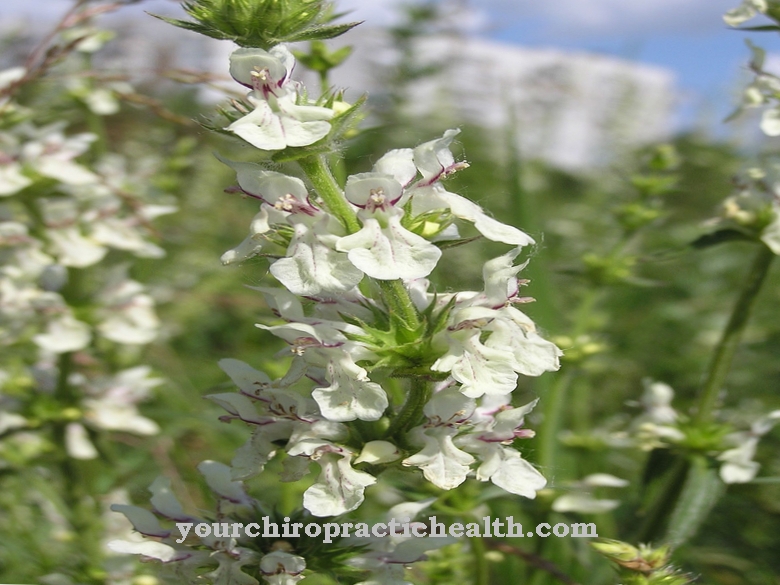Occurrence and cultivation of the motherwort

The Real motherwort is a herbaceous plant that grows up to 120 cm high. The plant has a square, hollow stem that is slightly hairy. The stalked, medium-green leaves, whose shape is reminiscent of a lion's tail, are hairy on the underside. These leaves are lobed with three to seven columns. The flowers stand as a whorl on the upper leaf axes.
These whorls consist of several cream-white to pink-colored single flowers. The motherwort flowers have a curved upper lip reminiscent of a helmet and a three-part lower lip with a brownish mark. The upper lip of the flowers is hairy, which makes them look fluffy. The plant blooms from June to September. It is highly valued by bees as a source of food.
The motherwort belongs to the mint family. It occurs naturally in Europe as well as in the Middle East and Central Asia. It prefers nitrogen-rich soils. It is therefore often found on fallow land, on walls or fences in rural areas. The motherwort is also grown as an ornamental and medicinal plant. Their natural occurrence is declining in Germany.
In Baden-Württemberg the plant is even considered to be endangered. There are two subspecies of this plant: the common motherwort, whose leaves are only slightly hairy, and the shaggy motherwort, whose leaves, as the name suggests, are very hairy. The plant can easily be planted in your own garden, as it is very undemanding and does not require any special care.
Effect & application
The most important ingredients of the real motherwort are ajugoside, ajugol, flavonoids, tannins, bitter substances, diterpenes, triterpenes and, in relatively small amounts, essential oils and caffeic acid. To use the motherwort from their own cultivation, the young, soft parts of the herb are cut and dried in a room with low humidity at around 35 degrees Celsius. This can happen several times a year. The dried herb is then chopped up and stored in a well-closing container.
A motherwort tea is made by pouring hot water over one or two teaspoons of the crushed herb. Then this tea has to steep for about 10 minutes. Then it is strained and drunk in small sips. We recommend three cups of this tea a day. However, this should not be done for more than six weeks at a time.
By taking a drinking break, during which a tea with a similar effect may be used, you can avoid the unwanted long-term effects of motherwort tea. A tincture is made by pouring alcohol or double grain over the herb in a glass with a screw cap so that it is completely covered.
After the mixture has been steeped for about six weeks, it is strained and transferred to a bottle made of dark glass. It is recommended to take up to 50 drops of this tincture three times a day. The tincture can be diluted with water for ingestion. A motherwort syrup, which can be used to sweeten tea, has proven itself against menopausal symptoms.
This syrup is made by dissolving 500 grams of sugar or honey in four cups of water in a saucepan over medium heat, stirring constantly. Then 150 grams of the dried herb is added and the mixture is heated for five minutes. After the mixture has soaked overnight, it is passed through a sieve and transferred to a bottle. It is then stored in the refrigerator. To combat the symptoms, a teaspoon of this syrup should be taken daily for a period of one to two weeks.
Importance for health, treatment & prevention
The genuine motherwort is already mentioned in the medical books of the Middle Ages. In the first herbal book, the »Gart der Gesundheit«, written in German, it is recommended as a medicine against heart problems and stomach pressure.
In addition to its use as heart medicine, as the name suggests, it was also used against menstrual cramps, to support pregnancy, to combat epilepsy and melancholy. Today the use is limited to nervous heart problems, the support of the thyroid function, the lowering of blood pressure, general calming, the treatment of digestive problems and menstrual cramps.
Scientific research confirms the knowledge that the motherwort increases the blood flow through the heart, the so-called coronary flow, lowers the heartbeat frequency and thus relieves the heart. It has also been shown to be a calcium channel antagonist. A calcium channel blocker blocks the pores through which calcium enters. This leads to a decrease in blood pressure.
The treatment is either a tea made from the herb of the plant (stems, leaves, flowers) or an extract of the active substances from the plant, which is sold as a tincture or capsules. Tinctures consist of an extract of the active components of the plant dissolved in alcohol. These tinctures can be kept for several years. Another possibility is the production of a herbal syrup from the herb of the real heart sprouts.
This plant is not only used in homeopathy and natural medicine, it is also, at least partially, recognized by conventional medicine. Side effects are not known. In older literature and occasionally on websites, the motherwort is referred to as poisonous. The Federal Institute for Drugs and Medical Devices, however, considers a daily dose of 4.5 grams of the herb to be harmless. To be on the safe side, pregnant women and nursing mothers should refrain from using the motherwort or products containing this plant.



























